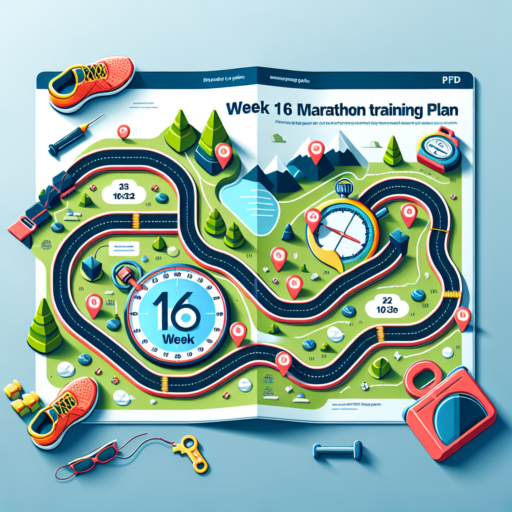Introduction to Nine-Week Half Marathon Training
Embarking on a nine-week half marathon training plan is an exciting challenge for runners of all levels. This condensed training timeframe is perfect for those who have a base level of fitness and are looking to push themselves towards completing a 13.1-mile race. Unlike traditional training plans that might span twelve to sixteen weeks, a nine-week program focuses on balancing intensity and recovery keenly, ensuring you reach the start line ready and able.
At the core of a nine-week half marathon training plan is the philosophy of progressive overload combined with adequate rest. This method ensures a gradual increase in distance and intensity, preventing injury while promoting endurance and speed. Key workouts, such as long runs, tempo runs, and interval training, are carefully placed throughout the week to optimize performance gains while allowing your body to recover and adapt.
Nutrition and hydration play critical roles in your training, even more so in a condensed timeframe like nine weeks. Focusing on a balanced diet rich in vitamins, minerals, fats, proteins, and carbohydrates will support your energy levels and recovery. Meanwhile, proper hydration strategies before, during, and after runs are crucial to prevent dehydration and maintain optimal performance.
The Weekly Breakdown of Your Nine-Week Half Marathon Plan
Embarking on a half marathon journey is an exciting challenge that requires dedication, resilience, and a well-structured training plan. The nine-week timeframe is optimal for individuals who already have a base level of fitness and are looking to push their limits. Each week in this plan is meticulously designed to gradually increase your stamina, improve your pace, and prepare your body for the 13.1 miles ahead.
Week 1 to 3: These initial weeks are all about building a solid running foundation. Your focus will be on getting comfortable with regular runs, which includes a mix of short, medium, and one long run per week. Ensuring proper recovery and incorporating cross-training activities such as cycling or swimming can greatly enhance your physical preparedness without overstraining your body.
Week 4 to 6: During this phase, the intensity and duration of your runs will incrementally increase. You’ll introduce more specific training like tempo runs and interval training to boost your anaerobic threshold and running economy. This is the perfect time to pay attention to your body’s response to the heightened demands, making adjustments to your diet and recovery strategies as necessary.
Weeks 7 to 9: The final stretch of your training is about peaking your endurance and sharpening your race pace. Long runs will reach their maximum distance, simulating the half marathon length to ensure your readiness. This period also entails tapering down your training volume in the last week to allow your body to recover and gear up for race day, striking the right balance between maintaining fitness and avoiding fatigue.
Essential Gear for Your Half Marathon Training Journey
Embarking on a half marathon training journey is an exhilarating challenge that requires not only dedication and hard work but also the right gear to ensure safety, comfort, and improved performance. The importance of selecting the right items can’t be overstressed, as they can make a significant difference in your overall training experience and success on race day. From footwear to wearable technology, understanding what is essential can help you start your training on the right foot.
Choosing the Right Footwear
At the top of your gear list should be a reliable pair of running shoes. It’s crucial to choose footwear that provides the right balance of support, cushioning, and flexibility to match your specific foot type and running style. Consider visiting a specialty running store where you can get a professional fitting. Remember, the right shoes can help prevent injuries and make your runs more comfortable and enjoyable.
Apparel That Works as Hard as You Do
Your choice of apparel can greatly influence your training performance and comfort. Opt for moisture-wicking fabrics that help keep you dry and comfortable no matter the distance. Layering is key for adapting to various weather conditions, so include lightweight, breathable layers that you can easily add or remove. Don’t forget to tailor your choices to the specific climate you’ll be training in to ensure you’re prepared for any weather scenario.
Essential Tech Gadgets
Integrating technology into your training regimen can provide valuable feedback on your performance and progression. A high-quality running watch or fitness tracker can monitor your pace, distance, heart rate, and more, offering insights that can help you adjust your training accordingly. Additionally, consider investing in a good pair of sweat-resistant earbuds to enjoy your favorite tunes or podcasts, which can be a wonderful motivation during those longer runs.
Week 1-3: Building the Foundation for Your Half Marathon Success
The initial three weeks of your half marathon training are critical in laying down a robust foundation for the rest of your journey. During this phase, it’s vital to focus on establishing a routine that incorporates running, strength training, and rest. Starting with shorter, manageable runs will help your body adjust to the physical demands of marathon training, reducing the risk of injury and ensuring a smoother progression.
Consistency is key during these early weeks. Aim to establish a running schedule that fits comfortably within your lifestyle, making running a regular part of your routine. It’s not just about clocking miles; integrating strength workouts is equally important. These workouts will build muscle endurance and improve your overall running efficiency, making those longer runs down the line feel a bit easier. Remember, rest days are just as crucial for recovery and preventing burnout, ensuring you stay motivated and on track.
Besides the physical preparation, start to engage with the mental aspect of running. Setting small, achievable goals each week can help maintain focus and build confidence. Whether it’s increasing your distance, incorporating hills, or improving your pace, these early victories will be fundamental in building your mental resilience for the challenges ahead.
Week 4-6: Increasing Distance and Endurance
During weeks 4 to 6 of your training program, the focus shifts significantly towards increasing both the distance you run and your overall endurance. This pivotal phase is designed to build upon the foundation you’ve established in the initial weeks, pushing your limits further in a structured manner. The key to success lies in gradually elevating your goals, ensuring consistent improvement while minimizing the risk of injury.
Strategically Enhancing Your Running Distance
Incremental progression is paramount during this stage. Aim to increase your running distance by approximately 10% each week. This measured approach helps your body adapt to the increased demands without overwhelming it. Implementing longer runs into your routine not only enhances your physical stamina but also prepares your mind for the increased exertion.
Boosting Endurance through Varied Workouts
Endurance building is not solely about adding more miles to your runs. Incorporating a variety of workouts, such as tempo runs and interval training, can significantly improve your cardiovascular strength and muscular endurance. These workouts challenge your body in different ways, contributing to a more comprehensive fitness level and better performance.
Remember, at this stage, the goal is to not only push your limits but to do so wisely. Listening to your body’s signals is crucial; ensure you incorporate adequate rest and recovery. Your journey towards increasing distance and endurance is a testament to your dedication and hard work. Keep focused, and you’ll see remarkable progress in your running capabilities.
Week 7-9: Tapering, Resting, and Pre-Race Preparations
When entering weeks 7-9 of your training plan, you’re transitioning into a critical phase that focuses on tapering, resting, and pre-race preparations. This period allows your body to recover from the intense training you’ve undergone and prepares it for the day of the race. Tapering reduces your training volume and intensity, giving your muscles time to repair and strengthen. It’s vital not to skip this phase, as it significantly contributes to your performance on race day.
Understanding Tapering
Tapering involves gradually decreasing your workout intensity and volume. This strategy is crucial for avoiding overtraining and injuries before the event. During the tapering weeks, your focus should shift towards maintaining fitness rather than improving it. It’s a time to let your body assimilate the hard work you’ve done and to store energy for the race. Incorporating light workouts, such as short runs at race pace or lower-intensity cross-training activities, can keep your muscles engaged without overtaxing them.
Optimizing Rest and Recovery
Resting doesn’t mean becoming completely sedentary. Instead, enhance your recovery through active rest days, quality sleep, and proper nutrition. Pay close attention to your body’s needs; hydration and balanced meals rich in carbohydrates, proteins, and fats become even more critical. Practices such as yoga, meditation, and light stretching can aid in mental and physical recovery, preparing you mentally and physically for the race day.
Pre-Race Preparations
In addition to tapering and resting, your pre-race preparations should include checking your gear, planning your race day logistics, and establishing a race strategy. Make sure your running shoes are in good condition and break in any new gear prior to the race. Familiarize yourself with the race course, decide on your pacing, and plan your nutrition and hydration strategy for the race day. These steps will help minimize any stress leading up to the race, allowing you to focus on putting your best foot forward.
Nutrition and Hydration Tips for Half Marathon Training
Training for a half marathon is a challenging yet rewarding endeavor that requires more than just physical stamina and discipline. An often overlooked but crucial aspect of your training regimen involves proper nutrition and hydration. Consuming the right nutrients and staying adequately hydrated can significantly enhance your endurance, performance, and recovery.
Optimizing Your Pre-Run Nutrition
Starting your run with the right fuel in your system is essential for maximizing performance. Focus on consuming a meal or snack that is rich in complex carbohydrates, moderate in protein, and low in fat approximately 1-2 hours before your run. Foods like oatmeal with fruit, a banana with peanut butter, or whole-grain toast with a slice of turkey are excellent choices. This balanced approach ensures a steady release of energy throughout your training session.
Staying Hydrated Before, During, and After Runs
Hydration plays a pivotal role in your half marathon training. Begin hydrating well before you start your run, aiming for at least 16-20 ounces of water 2-3 hours before. During your run, listen to your body’s cues and drink water regularly to replace fluids lost through sweat. Electrolyte-replacement drinks can be beneficial on longer runs to replenish sodium and potassium levels. Post-run, rehydrate with additional fluids and consider a beverage that aids in recovery, such as coconut water or a sports drink, to restore hydration and electrolyte balance.
Common Challenges and How to Overcome Them
Facing challenges is an inherent part of any journey towards success. Whether in a personal or professional context, obstacles can serve as an opportunity for growth. However, identifying the most efficient ways to overcome these hurdles is crucial. In this section, we delve into strategies and mindsets that can assist in navigating the complexities of common challenges.
Strategy 1: Embrace a Growth Mindset
One of the primary steps in overcoming challenges is adopting a growth mindset. This means viewing challenges not as insurmountable barriers, but as opportunities to expand your skill set and knowledge. Such a perspective encourages resilience and an openness to learning, which are essential qualities in the face of difficulty. By believing in your ability to grow and improve, you set the stage for effective problem-solving and personal development.
Strategy 2: Break Down the Challenge
Another effective method is breaking down the challenge into smaller, more manageable parts. This approach helps in understanding the problem better and makes it less daunting. Identify the components of the challenge and tackle each part one at a time. This segmented strategy not only simplifies the process but also creates a series of achievable goals, making progress more tangible and motivating.
Finally, seeking support and leveraging resources can make a significant difference in overcoming obstacles. No one is expected to face challenges alone. Building a network of support, whether through mentors, colleagues, or friends, provides diverse perspectives and practical advice. Additionally, utilizing available resources, such as educational materials, online courses, and professional guidance, can equip you with the necessary tools to navigate through difficulties effectively.
Injury Prevention Techniques During Your Training
When it comes to maintaining an active lifestyle, injury prevention is key. No matter your experience level or the intensity of your training, incorporating effective strategies to prevent injuries is crucial. Below, we explore several techniques designed to keep you safe and healthy, enabling you to continue your training regimen without unwanted interruptions.
Proper Warm-Up and Cool-Down Routines
Beginning your workout session with a proper warm-up and ending it with a thorough cool-down is fundamental in injury prevention. These routines help in gradually increasing your heart rate and blood flow to muscles, thereby reducing the risk of muscle strains and joint pains. Warm-up exercises such as dynamic stretching can prepare your body for the workout ahead, while cool-down activities like static stretching can aid in recovery and flexibility.
Strength Training and Flexibility Exercises
Integrating strength training and flexibility exercises into your routine is not only beneficial for building muscle and endurance but also crucial for preventing injuries. Strength training, especially that which targets the core and the muscles you utilize most during your primary activity, can bolster your body’s resilience. Meanwhile, flexibility exercises enhance your range of motion, preventing injuries related to overextension and muscle imbalances.
Listen to Your Body and Allow for Adequate Recovery
One of the most important, yet often overlooked, techniques in injury prevention is listening to your body. Recognizing the difference between good pain, such as slight muscle soreness, and bad pain, indicative of an injury, is crucial. Equally important is allowing for adequate recovery time, which includes getting enough sleep and incorporating rest days into your training schedule. This approach not only helps prevent overuse injuries but also ensures that your body is always ready for the challenges ahead.
No se han encontrado productos.
FAQs on Nine-Week Half Marathon Training
When considering a nine-week half marathon training plan, a number of questions often arise. Whether you’re a beginner runner or someone looking to set a new personal record, understanding the nuances of such a condensed training schedule is crucial. This section addresses common inquiries to help you prepare effectively for your upcoming half marathon.
Is Nine Weeks Enough to Prepare for a Half Marathon?
One of the most frequent questions is about the feasibility of preparing for a half marathon in just nine weeks. For individuals who maintain a base level of fitness and are comfortable running shorter distances, nine weeks can be sufficient to prepare for a half marathon. However, this timeframe requires a well-structured plan that progressively increases mileage while including rest and recovery periods.
What Should My Weekly Mileage Be?
An essential aspect of your nine-week half marathon training is the weekly mileage. Initially, aim to run three to four times a week, covering a distance that feels comfortable yet challenging. Gradually, you will increase this mileage, with a focus on a longer run once a week that simulates race conditions. The exact mileage can vary based on your fitness level, but it’s crucial to listen to your body and not increase mileage by more than 10% per week to avoid injury.




